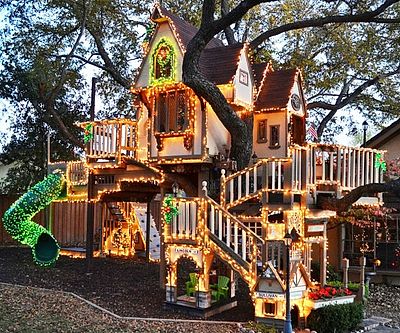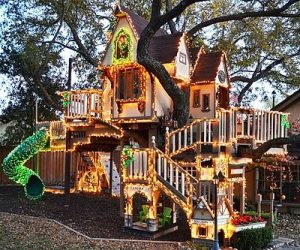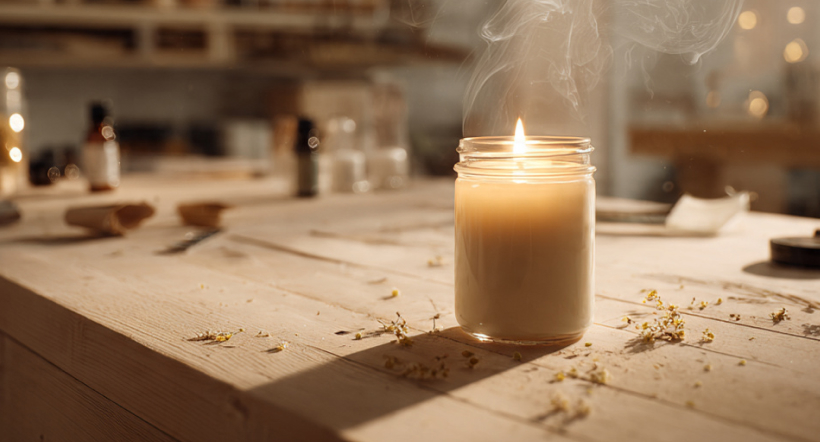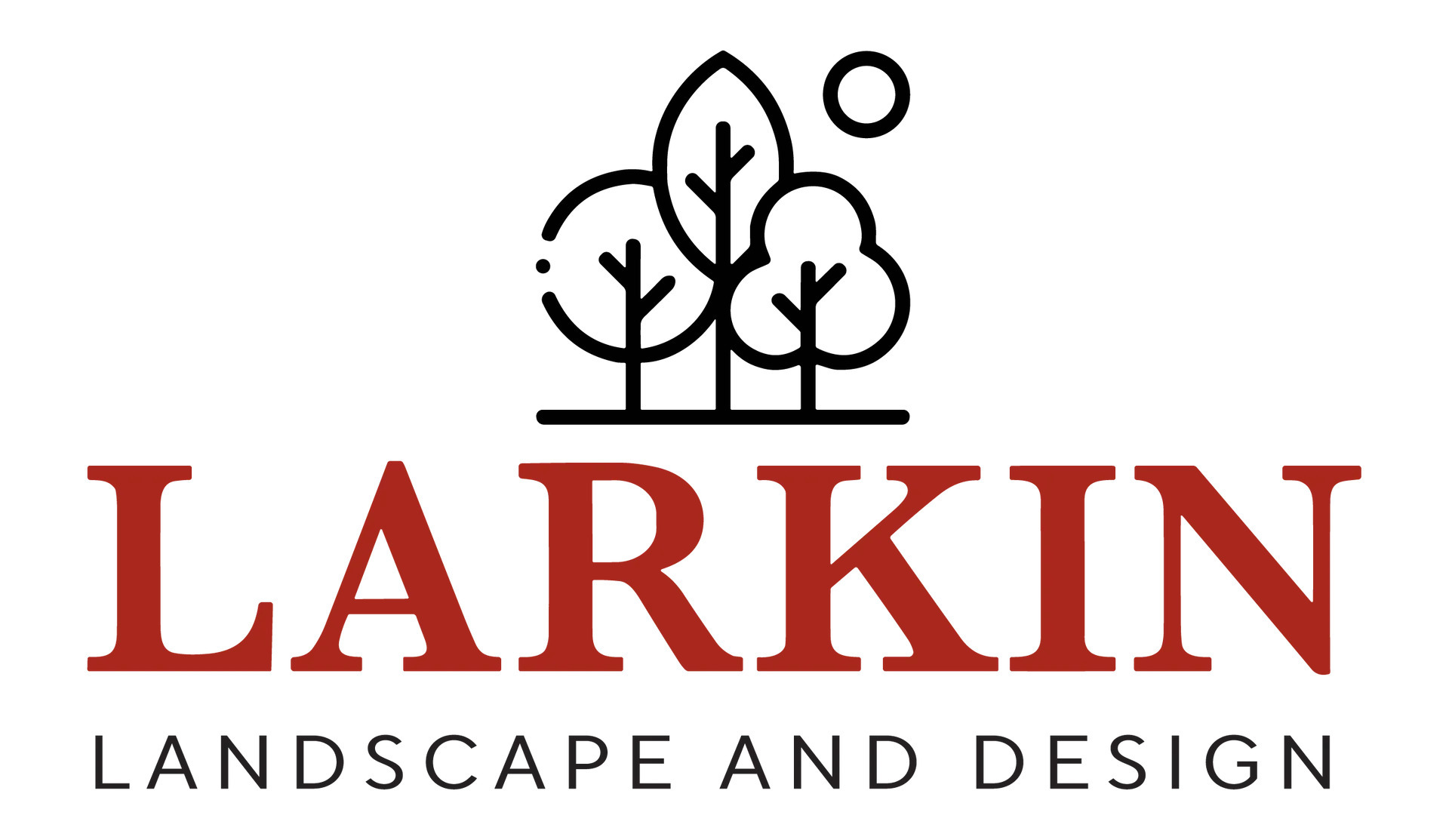Home Garden
13 Easy Treehouse Ideas for Kids’ Weekend Adventures

Introduction:
The allure of a treehouse is unparalleled—a world of imagination, adventure, and cherished memories nestled among the branches. For a truly memorable kids’ weekend, explore these 13 Easy Treehouses ideas that promise to elevate your family’s escapades to new heights.
The Magic of Treehouses: A Gateway to Adventure:
Treehouses ignite a sense of wonder and exploration in kids. Beyond being a mere hideaway, they foster creativity, independence, and a connection to nature—a gateway to adventures waiting to be unlocked.
Choosing the Right Tree and Location:
Picking the right tree is crucial for a safe and sturdy treehouse. Assess factors like tree health, type, and location within your yard. A well-chosen tree sets the foundation for an enchanting and secure hideaway.
Safety First: Building a Secure Treehouse:
Before embarking on construction, prioritize safety. Learn about proper support systems, railing heights, and essential precautions to ensure your treehouse is a secure haven for young adventurers.

Image by: https://contrank.com/
13 Easy and Creative Treehouse Ideas:
- The Pirate’s Den: Unleash your little one’s inner pirate with a ship-themed treehouse complete with a plank, telescope, and treasure chest.
- Enchanted Forest Retreat: Craft a magical realm with fairy lights, whimsical décor, and an ambiance that sparks imaginative play.
- Adventure Tower: Combine climbing walls, rope ladders, and lookout points for a treehouse that doubles as an adventure playground.
- Nature Observatory: Nurture budding scientists with a tree-level observatory equipped with telescopes and star charts.
- Cozy Cabin in the Canopy: Create a snug cabin retreat with cozy blankets, cushions, and a mini library for quiet moments.
- Jungle Safari Hideout: Transform your treehouse into a jungle outpost, complete with animal masks, binoculars, and exploration tools.
- Sky High Art Studio: Encourage creativity with an art-inspired treehouse, stocked with easels, paints, and an inspiring view.
- Space Explorer’s Base: Blast off to the cosmos with a space-themed treehouse featuring planetary decorations and astronaut gear.
- Sports Fanatic’s Hangout: For active adventurers, design a sports-centric treehouse with mini basketball hoops, target boards, and more.
- Mini Greenhouse Oasis: Combine education with fun by cultivating plants and herbs in a mini greenhouse treehouse.
- Fairytale Castle in the Sky: Craft a storybook fantasy with turrets, flags, and a charming drawbridge entry.
- Time-Traveling Time Machine: Spark imagination with a treehouse that doubles as a time machine, transporting kids to various eras.
- Aquatic Adventure Platform: If you have water nearby, construct a treehouse that offers a view of lakes, rivers, or oceans, complete with a nautical theme.
Materials and Tools You’ll Need:
Gather essential materials and tools such as lumber, nails, saws, and safety equipment before starting construction. Adequate preparation ensures a smoother building process.
Step-by-Step Guide: Constructing Your Kid’s Dream Treehouse:
Follow a step-by-step guide to build a treehouse, including designing a blueprint, building the platform, adding walls and a roof, and installing safety features.
Adding Personal Touches and Decorations:
Transform your treehouse into a one-of-a-kind haven by incorporating personal touches like painted murals, handmade crafts, and comfortable seating.
Safety Measures and Regular Maintenance:
Ensure ongoing safety by regularly inspecting the treehouse’s structure, fastenings, and supports. Implement maintenance practices to keep the treehouse in excellent condition.
Treehouse Games and Activities:
Fill your treehouse with games and activities like storytelling sessions, nature scavenger hunts, and stargazing nights to create lasting memories.
Capturing Memories: Photography and Scrapbooking:
Document your treehouse adventures through photography and scrapbooking, preserving the joy and creativity that your family shares.
A Weekend to Remember: Planning the Ultimate Treehouse Adventure:
Plan a weekend getaway filled with treehouse exploration, nature hikes, campfires, and bonding activities to create an unforgettable experience.
Conclusion:
A treehouse is more than just a structure; it’s a vessel for imagination, a realm of adventure, and a treasure trove of cherished moments. By exploring these 13 easy treehouse ideas, you can build dreams up high and create a magical haven where your kids’ weekend adventures will forever be etched in their hearts.
Art /Entertainment
How This Small 8-oz Mason Jar Is Changing the Entire Candle Industry

Introduction
In a world where trends shift faster than ever, one product has quietly risen to become a powerhouse in the candle market: the humble 8-oz Mason jar candle. What started as a simple, nostalgic glass container has now evolved into a best-selling size and a major driver behind today’s booming candle industry.
From luxury lifestyle brands to small home-based entrepreneurs, everyone is embracing the 8-oz Mason jar and for good reason. Its appeal goes far beyond size. It blends practicality, aesthetics, affordability, and brandability in a way no other candle format can match.
So how is this small jar reshaping an entire industry? Let’s break it down.
How This Small 8-oz Mason Jar Is Changing the Entire Candle Industry
1. The 8-oz Mason Jar Fits Today’s ‘Minimalist-Luxury’ Trend Perfectly
Consumers in 2025 want products that feel premium, simple, and intentionally designed. The 8-oz Mason jar checks all three boxes.
It has the clean lines, transparent body, and classic charm that align perfectly with the minimalist-luxury trend dominating Instagram, Pinterest, and modern home décor. Whether displayed on bookshelves, bedside tables, or kitchen counters, its aesthetic blends effortlessly into any style:
- Scandinavian
- Boho
- Modern farmhouse
- Japandi
- Urban minimalist
Brands love this because it gives them a product that feels high-end without needing an expensive custom mold or complex packaging. The jar itself already looks premium, and when paired with the right label design, it becomes a branded artwork.
2. Ideal Size for Scent Throw & Burn Time
The 8-oz size hits the sweet spot between performance and convenience.
- Perfect for slow, even burning: Its wide mouth and deeper jar shape allow smooth, controlled melting. This prevents tunneling and offers an even burn from start to finish.
- Outstanding scent throw: The surface area is perfect for distributing fragrance across small and medium-sized rooms.
- Long-lasting without overwhelming: Customers get 40–50 hours of burn time good value without committing to an oversized candle.
This balance of burn time + fragrance performance is one of the biggest reasons why 8-oz Mason jars are consistently top-sellers in both retail stores and online shops.
3. The Best Size for Private Label & Small Businesses
For private label brands, boutiques, and new entrepreneurs, the 8-oz Mason jar is a dream product. It minimizes risk while maximizing profit.
Why small brands love it:
- Affordable to produce
- Easy to customize
- Versatile for multiple collections
- Low shipping costs
- Perfect for trial orders or limited editions
You can create:
- holiday specials
- seasonal drops
- scent-specific collections
- collaborations
- gift bundles
…all without needing to invest in larger, riskier inventory.
High profit margins
This candle size allows brands to price anywhere between $12 $28, depending on the target audience. Because the jar cost is low and the production process is efficient, margins remain strong especially for boutique brands.
4. The 8-oz Mason Jar Has Become Instagram & TikTok Friendly
TikTok and Instagram Reels have changed how products go viral and the 8-oz Mason jar candle is one of the most “share-worthy” candle types ever.
Why?
- Aesthetic pouring videos: The transparency of the jar shows the creamy white wax beautifully during the pour.
- Label transformation clips: Creators love showing before/after label upgrades.
- Packaging ASMR: The small size is perfect for aesthetic packaging videos, which attract millions of views.
- DIY + small business content: The jar’s accessibility makes it ideal for creators who showcase candle-making tutorials.
This social media exposure has skyrocketed demand. Consumers now associate 8-oz candles with quality craftsmanship, authentic branding, and small business charm even when mass brands sell them.
5. A Perfect Size for Gifting:A Major Sales Boost
Giftability plays a huge role in candle sales, especially during:
- Weddings
- Housewarmings
- Festivals
- Corporate gifting
- Holiday seasons
The 8-oz candle is budget-friendly enough for bulk gifting, yet premium enough to feel special. Brands can sell them as:
- personalized wedding favors
- branded corporate gifts
- holiday bundles
- self-care boxes
- subscription box items
Since candles are one of the most gifted products in the world, this size wins the market repeatedly.
6. Practical for Shipping: A Game Changer for E-Commerce
The candle industry has massively shifted online and logistics matter more than ever. The 8-oz Mason jar excels because:
- It’s lightweight compared to larger candles
- Less prone to breakage
- Cheaper shipping for customers and brands
- Fits standard mailer boxes
- Easy to pack in multiples for bundle deals
In e-commerce, even small reductions in shipping weight translate into huge annual savings. That alone has pushed many brands to make the 8-oz jar their top-selling SKU.
7. Allows Brands to Offer More Scents Easily
Consumers love variety especially in home fragrances. Instead of committing to one large candle, they prefer buying multiple smaller ones to explore different scents.
The 8-oz Mason jar allows brands to create:
- 12–40 scent collections
- Limited editions
- Seasonal drops
- Custom fragrance lines
- Collab-themed releases
This flexibility helps brands stay relevant all year round.
A big part of the candle industry’s success today comes from fast-moving fragrance trends, and the 8-oz size adapts to them perfectly.
8. Enhances Brand Identity Through Custom Packaging
The jar might be small, but its branding potential is huge.
Brands can customize:
- Label shape
- Label color
- Logo size
- Jar cap color
- Box packaging
- Stickers
- Wrap bands
With the rise of private label manufacturing and 3D configurators (like those at PrivateLabelCandles.com), brands now have unprecedented control in designing a candle that reflects their story.
Small jar, big brand presence.
9. Sustainability & Reusability: A Major Consumer Preference
Modern consumers care deeply about:
- waste reduction
- reusable containers
- eco-friendly materials
Mason jars check all the boxes.
After the candle finishes, customers reuse the jar for:
- storage
- décor
- DIY crafts
- planters
- spice containers
- pen holders
This reusability adds emotional and functional value, making customers feel better about their purchase — and more connected to the brand.
10. Affordable for Beginners, Profitable for Experts
The 8-oz Mason jar acts like the gateway product of the candle industry.
Beginners love it because:
- Low investment
- Easy to learn
- Forgiving in pouring mistakes
- Suitable for small batches
Established brands love it because:
- Consistent best-seller
- Perfect for wholesale
- High repeat purchase rate
- Great for subscription boxes
No matter where a brand is in its journey, this jar works.
Conclusion: Small Jar, Big Impact
The 8-oz Mason jar candle has become far more than just a product it’s a movement shaping the candle industry’s future.
It’s a perfect balance of:
- size
- aesthetics
- performance
- affordability
- brandability
- trend alignment
…has made it a universal bestseller, from handmade creators to major private-label manufacturers.
In a fast-changing market, the 8-oz Mason jar stands out as a timeless product that continues to drive innovation, creativity, and profitability. And as we move deeper into 2025, its influence is only growing stronger.
For more blogs: visit here
Home Garden
Top Benefits of Installing Artificial Grass in Melbourne Homes

Introduction
Ever wondered why your neighbour’s lawn stays perfect all year while yours struggles through Melbourne’s unpredictable weather? With rising water bills, constant maintenance, and shifting seasons, more homeowners are turning to artificial grass Melbourne solutions for long-lasting, low-maintenance lawns.
This condensed guide explains the key differences between natural and synthetic turf, the top benefits of switching, and how to choose the right artificial grass for your Melbourne home.
Natural Grass vs Artificial Grass: What Melbourne Homeowners Need to Know

1. The Real Difference Between Synthetic and Natural Turf
Natural grass is a living plant that needs regular mowing, watering, fertiliser, and sunlight. It reacts to drought, pests, shade, and seasonal changes—making maintenance a constant workload.
Artificial grass, however, is made from durable polyethylene or polypropylene fibres designed to look and feel like real turf. Modern artificial grass Melbourne products feature realistic blade shapes, multiple tones, and UV-stabilised fibres that stay green year-round.
Unlike natural lawns, synthetic turf doesn’t turn brown during drought, develop muddy patches, or struggle in shaded areas. Its appearance remains consistent no matter the weather—ideal for Melbourne’s famous “four seasons in a day.”
2. Environmental Impact in Melbourne’s Climate
Melbourne regularly experiences water restrictions and unpredictable rainfall. Artificial grass saves tens of thousands of litres of water annually and eliminates the need for chemicals, fertilisers, and petrol-powered mowers—reducing your home’s carbon footprint.
The Top 10 Benefits of Installing Artificial Grass Melbourne

- Year-Round Green Lawn in Any Weather: Melbourne’s unstable weather is tough on natural turf, but synthetic grass stays lush through heatwaves, heavy rain, and frosty mornings. It drains quickly, doesn’t fade under harsh UV rays, and never turns patchy or muddy.
- Massive Water Savings: A typical naturallawn uses over 70,000 litres of water annually. Switching to artificial turf dramatically reduces water use and cuts your utility bills—especially valuable during Melbourne’s drought periods.
- Zero Lawn Maintenance: With artificial grass Melbourne, you can say goodbye to mowing, edging, fertilising, and weeding. A quick brush and occasional rinse are all you need, giving you stress-free weekends and a permanently neat yard.
- Pet-Friendly and Durable: Dogs can’t dig through artificial turf, and it prevents muddy paws indoors. Pet urine drains easily, and antimicrobial infills help reduce odours. High-quality synthetic grass withstands heavy play without balding or tearing.
- Safe for Children: Artificial turf creates a cushioned, level, and non-allergenic play area. Optional shock-pad underlays make it safer for toddlers, and parents love that playtime doesn’t result in muddy clothes or grass stains.
- Ideal for Small or Challenging Spaces: Its lightweight, low-maintenance nature makes it ideal for compact Melbourne homes and inner-city living
- Boosts Property Value and Kerb Appeal: A flawless, evergreen lawn instantly enhances your property’s appearance. Buyers appreciate the low-maintenance appeal, especially in busy urban areas where natural lawns are harder to maintain.
- Allergy-Friendly Outdoor Living: No pollen, grass seeds, or mowing debris means relief for allergy sufferers. Families with hay fever enjoy spending more time outside without symptoms.
- Long-Term Durability and Excellent ROI: Quality artificial turf lasts 15–20 years, even with heavy use. UV-stable fibres, strong backing, and advanced drainage systems ensure your lawn stays attractive and functional for years.
- Eco-Friendly Benefits: By eliminating pesticides, fertilisers, water use, and mower emissions, artificial turf contributes to a healthier environment and supports sustainable living.
How to Choose the Best Artificial Grass Melbourne
Key Features of Premium Synthetic Turf
- Realistic Fibre Design: Choose turf with multi-toned blades, natural colour blends, and a realistic thatch layer.
- Ideal Pile Height (25–40mm): Shorter piles suit high-traffic areas; longer piles provide a luxurious lawn look.
- High Density (16,000+ stitches per m²): Denser turf feels softer and looks fuller.
- Strong, Permeable Backing Good drainage prevents water pooling during Melbourne’s heavy rain.
- UV Stabilisation: Essential for preventing fading in Australia’s intense sun.
Best Turf Types for Different Needs
- General backyard lawns: Soft polyethylene turf
- High-traffic areas: Nylon-reinforced blends
- Shaded areas: Fast-draining turf
- Sports or active families: Shorter pile height (20–25mm)
- Balconies or rooftops: Lightweight, easy-to-clean options
Finding Affordable Synthetic Grass
You can save money by choosing:
- end-of-roll pieces
- discontinued stock
- direct-from-supplier options
- slightly shorter pile heights
Always choose quality over the cheapest option to ensure long-term durability.
Artificial Grass for Balconies
- Benefits: Artificial grass transforms balconies into green, usable spaces. It’s lightweight, soft underfoot, renter-friendly, and easy to clean.
- Potential Challenges: Drainage must be considered. In windy areas, secure edges or use interlocking tile systems.
- Best Balcony Turf Options: Choose shorter pile heights (20–30mm), enhanced drainage backing, and lightweight designs.
Addressing Common Concerns
- Does Artificial Grass Get Hot: It can warm up in direct sun, but heat-reducing technologies and a quick water spray help cool it instantly.
- Will It Look Fake: High-quality artificial grass Melbourne products look incredibly realistic with multi-toned fibres and natural textures.
- How Long Does It Last: Premium turf lasts 15–20 years with minimal upkeep, offering outstanding long-term value.
Is Artificial Grass Right for Your Melbourne Home?

With major savings on water, zero mowing, and year-round kerb appeal, artificial grass Melbourne offers convenience, durability, and long-term value—making it one of the smartest outdoor upgrades for modern homes. If you’re ready to transform your outdoor space, enhance your kerb appeal, and enjoy a lawn that stays perfect all year, now is the ideal time to choose artificial grass and take the first step toward a greener, maintenance-free lifestyle.
Home Garden
The Custom Landscaping Process from Start to Finish

Introduction
A beautiful landscape can completely transform the look and feel of any property. Whether it’s a cozy backyard garden, a modern patio, or a sprawling outdoor retreat, custom landscaping allows homeowners to create a unique space that matches their style and lifestyle. But what exactly goes into creating a custom landscape?
Many people assume that landscaping simply involves planting trees or laying down grass. In reality, it’s a detailed, step-by-step process that combines creativity, design, planning, and craftsmanship. Professional landscapers carefully guide clients through each phase—from the first consultation to the final touches—to ensure the result is not only beautiful but also functional and sustainable.
In this article, we’ll walk you through the complete custom landscaping process from start to finish, so you know what to expect when turning your outdoor dreams into reality.
The Custom Landscaping Process from Start to Finish
Step 1: The Initial Consultation
The landscaping journey begins with an initial consultation. This is where the client and the landscaping team meet to discuss ideas, goals, and expectations. The landscaper listens carefully to understand what the client envisions for their space.
During this stage, questions like the following are often discussed:
- What type of atmosphere do you want to create?
- How do you plan to use the space (for entertaining, relaxing, or gardening)?
- What is your budget and timeline?
The consultation also gives the landscaper a chance to assess the property. They take note of sunlight exposure, soil type, existing structures, and drainage patterns. This first step lays the foundation for a customized design that complements both the client’s preferences and the property’s natural features.
Step 2: Site Analysis and Measurements
Once the initial consultation is complete, the next step is to conduct a detailed site analysis. This involves taking accurate measurements and evaluating the terrain, slopes, and other environmental factors.
A thorough site analysis helps the designer understand how to work with the land rather than against it. For example, they might identify areas where water tends to pool after rain or spots that receive more sunlight—factors that influence plant selection and layout.
Photographs, soil tests, and even drone imaging may be used to capture every detail of the property. These data points help create a design plan that maximizes functionality and aesthetics.
Step 3: Concept Design and Planning
With all the site information in hand, the landscaping team moves on to the concept design stage. This is where ideas start to take shape. Designers create sketches, mood boards, or digital renderings to present different concepts to the client.
These designs show how the various elements—like patios, pathways, water features, and plantings—will come together. At this point, clients can make adjustments or provide feedback. The goal is to ensure the design aligns perfectly with the client’s vision and budget.
Some common features included in custom landscape designs are:
- Paved walkways and driveways
- Outdoor kitchens and seating areas
- Water features like fountains or ponds
- Lighting systems for safety and ambiance
- Plant beds with native or ornamental species
The concept design phase is a collaborative process that encourages creativity while maintaining practicality.
Step 4: Budgeting and Proposal Approval
Once the design is finalized, the landscaping company provides a detailed proposal. This includes a breakdown of costs for materials, labor, plants, and other elements. The proposal ensures transparency and helps clients make informed decisions about their investment.
During this stage, adjustments can be made to align the design with the client’s budget. For instance, certain materials can be swapped for more cost-effective options without sacrificing quality or beauty.
Once the client approves the final proposal, the project moves into the next phase—preparation and construction.
Step 5: Site Preparation
Before any construction begins, the site must be properly prepared. This step is crucial for ensuring the longevity and success of the landscape design.
Preparation involves clearing debris, removing old plants, leveling the ground, and addressing drainage issues. If needed, existing structures like fences, patios, or walkways may be demolished to make room for new installations.
Grading the land is often a key part of this stage. Proper grading ensures that water flows away from buildings and prevents future problems like erosion or flooding. Once the site is ready, the real transformation begins.
Step 6: Construction and Installation
This is the most exciting part of the process—when the design comes to life. Construction and installation include building hardscape elements such as patios, retaining walls, decks, and pathways. Skilled craftsmen handle every detail, ensuring precision and durability.
After the hardscaping is complete, the softscaping begins. This involves planting trees, shrubs, flowers, and grass. The landscapers carefully select plants that suit the local climate and complement the design theme. Irrigation systems are installed to ensure that the plants receive proper watering year-round.
During this phase, lighting, outdoor furniture, and decorative features like sculptures or fire pits may also be added. The goal is to create a balanced blend of function and beauty.
Step 7: Irrigation and Drainage Solutions
No landscaping project is complete without proper water management. Efficient irrigation and drainage systems keep your plants healthy and prevent issues caused by excess water or dry conditions.
Professionals design irrigation systems that deliver the right amount of water to each area of the landscape. Drip systems, sprinklers, and moisture sensors are commonly used to conserve water while maintaining lush greenery.
Drainage solutions—like French drains, swales, or dry creek beds—help manage rainwater and protect the landscape from erosion or flooding. These systems ensure long-term sustainability and reduce maintenance needs.
Step 8: Lighting and Final Touches
Outdoor lighting adds charm, safety, and functionality to your landscape. Well-placed lights can highlight architectural features, illuminate pathways, and create a welcoming atmosphere after sunset.
LED lights, solar-powered fixtures, and low-voltage systems are popular options for energy-efficient lighting. The right lighting setup not only enhances the look of your yard but also extends its usability into the evening hours.
After lighting and finishing touches are added, the landscape begins to take on its final form. From decorative planters to garden art, every element contributes to a cohesive and inviting space.
Step 9: Final Walkthrough and Inspection
Before handing over the completed project, the landscaping team conducts a final walkthrough with the client. This allows the client to review the work, ask questions, and ensure everything meets their expectations.
During this step, minor adjustments or touch-ups may be made. The landscaper also provides guidance on how to care for the new plants, maintain irrigation systems, and keep the hardscape features in top condition.
This final review ensures complete client satisfaction and marks the successful completion of the landscaping project.
Step 10: Ongoing Maintenance and Care
A beautifully landscaped yard requires regular maintenance to stay in top shape. Many landscaping companies offer maintenance packages that include lawn care, pruning, fertilization, and seasonal clean-ups.
Routine maintenance keeps plants healthy, prevents weed growth, and ensures your outdoor space remains as stunning as the day it was completed. Clients can choose to maintain their landscape themselves or rely on professionals for expert care.
Proper maintenance not only preserves beauty but also extends the lifespan of your investment.
Benefits of Custom Landscaping
Custom landscaping offers several long-term benefits:
- Enhanced curb appeal: A well-designed landscape increases the visual appeal of your property.
- Increased property value: Professionally landscaped yards can boost resale value significantly.
- Personalized outdoor living: Custom designs create spaces tailored to your lifestyle.
- Environmental sustainability: Proper plant selection and irrigation systems support eco-friendly living.
- Improved quality of life: Beautiful surroundings promote relaxation and outdoor enjoyment.
Investing in a custom landscape is not just about aesthetics—it’s about creating a space that adds joy, value, and harmony to your home.
Conclusion
The custom landscaping process is a journey that transforms ideas into reality. From the first consultation to the final walk-through, every step is carefully planned to ensure beauty, function, and long-term satisfaction.
By working closely with skilled designers and landscapers, homeowners can achieve a personalized outdoor space that reflects their personality and complements their property. With proper design, construction, and maintenance, a custom landscape becomes more than just a yard—it becomes a peaceful retreat and an extension of your home.
Whether you’re starting from scratch or upgrading your existing yard, understanding this process helps you make informed decisions and enjoy a smoother, more rewarding experience.
-
Business2 years ago
Cybersecurity Consulting Company SequelNet Provides Critical IT Support Services to Medical Billing Firm, Medical Optimum
-
Business2 years ago
Team Communication Software Transforms Operations at Finance Innovate
-
Business2 years ago
Project Management Tool Transforms Long Island Business
-
Business2 years ago
How Alleviate Poverty Utilized IPPBX’s All-in-One Solution to Transform Lives in New York City
-
health2 years ago
Breast Cancer: The Imperative Role of Mammograms in Screening and Early Detection
-
Sports2 years ago
Unstoppable Collaboration: D.C.’s Citi Open and Silicon Valley Classic Unite to Propel Women’s Tennis to New Heights
-
Art /Entertainment3 years ago
Embracing Renewal: Sizdabedar Celebrations Unite Iranians in New York’s Eisenhower Park
-
Finance3 years ago
The Benefits of Starting a Side Hustle for Financial Freedom































